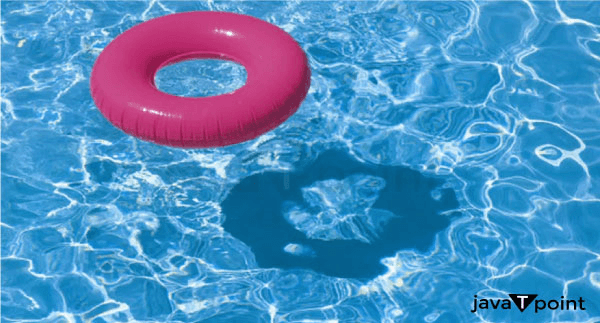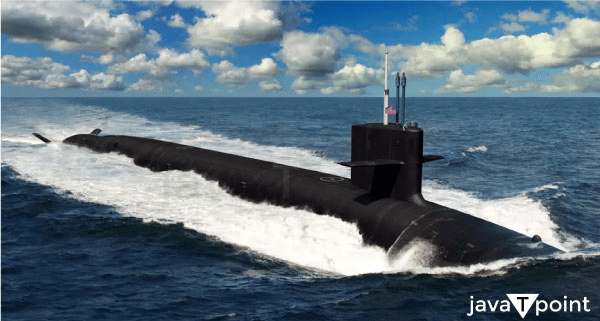Archimedes Principle
Introduction:
When you drop the ball from a height into a bucket of water, it initially drowns a little and then starts rising upwards until it reaches the surface of the water. If the ball, or any other object, dropped in water or any liquid, as a matter of fact, slowly rises to the surface of the liquid, then that means there must be a force that causes the object to rise. This force is referred to as buoyant force. Archimedes' principle deals with this force.
What is Archimedes' Principle?
Archimedes' principle, named after the ancient Greek mathematician and scientist Archimedes, is a vital concept in fluid mechanics. This principle provides a deep understanding of the behavior of objects immersed in fluids, such as liquids or gases. It explains the phenomena of buoyancy, which is the upward force experienced by an object submerged in a fluid. The principle states that when an object is immersed in a fluid (liquid or gas), it experiences an upward buoyant force equal to the weight of the fluid it displaces.
Explanation of Archimedes' Principle:
Archimedes' principle states that any object submerged in a fluid experiences an upward force called buoyant force, which is equal to the weight of the fluid displaced by the object. In other words, when an object is placed in a fluid, it displaces a certain amount of fluid volume equal to its own volume. This displaced fluid exerts an upward force on the object, counteracting the force of gravity pulling it downward.
Mathematical Representation:
The buoyant force can be mathematically expressed as follows:
Buoyant Force = ρ * V * g
Where:
ρ (rho) is the density of the fluid,
V is the volume of the fluid displaced by the object, and
g is the acceleration due to gravity.
Brief History of Archimedes' Principle:
The history of Archimedes' principle dates back to ancient Greece, and it is attributed to the renowned mathematician, physicist, and engineer Archimedes of Syracuse. The story of Archimedes' principle is famously associated with the discovery of a method to determine the purity of King Hiero II's gold crown. The king suspected that the goldsmith had adulterated the gold by mixing it with cheaper metals. However, King Hiero did not want to damage the crown by melting it down for a density test. Archimedes had a moment of insight while taking a bath. As he entered the bathtub, he noticed the water level rising and realized that the volume of water displaced was equivalent to the volume of his body. This revelation led him to conclude that the same principle would apply to other objects and fluids. Excited by his discovery, Archimedes is said to have jumped out of the bathtub and ran through the streets shouting, "Eureka!" which means "I have found it!" in Greek. He then proceeded to verify his theory using a simple experiment: he immersed a pure gold object and an equal weight of silver in water and found that the gold object displaced more water. This demonstrated that the crown, with a greater volume and less density, was indeed a mixture of gold and a cheaper metal.
Archimedes' work laid the foundation for our understanding of buoyancy and fluid mechanics.
Archimedes' principle has since become a cornerstone in physics and engineering. It is documented in his work "On Floating Bodies". It remains a crucial concept for studying the behavior of objects in fluids and designing various structures and vessels that interact with fluids. His contributions to mathematics, science, and engineering have left an enduring legacy that continues to influence modern scientific thought and development.
Significance of Archimedes' Principle:
Archimedes' work laid the foundation for our understanding of buoyancy and fluid mechanics. Archimedes' principle has since become a cornerstone in physics and engineering. It is documented in his work "On Floating Bodies" and is still an important concept for studying the behavior of objects in fluids and designing various structures and vessels that interact with fluids. His contributions to mathematics, science, and engineering have left an enduring legacy that continues to influence modern scientific thought and development.
Buoyant Force and Floating or Sinking:
Whether an object floats or sinks in a fluid depends on the relationship between the object's density and the fluid's density.

- Floating: If the object's density is less than the fluid's density (ρobject < ρfluid), then the buoyant force is greater than the object's weight. As a result, the object experiences a net upward force, causing it to float.
- Sinking: If the object's density is greater than the fluid's density (ρobject ρfluid), then the buoyant force is less than the object's weight. The object experiences a net downward force, causing it to sink.
- Neutral Buoyancy: If the object's density is equal to the fluid's density (ρobject = ρfluid), the buoyant force is exactly equal to the object's weight. In this case, the object remains suspended at a specific depth in the fluid, neither floating nor sinking. This condition is known as neutral buoyancy.
Everyday Examples:
Archimedes' principle has everyday applications that impact activities like swimming, diving, and even cooking. Here's how it's relevant to each of these activities:
- Swimming:
When you're swimming, Archimedes' principle plays a crucial role in keeping you afloat. The principle states that the buoyant force on an object submerged in a fluid (like water) equals the weight of the fluid displaced by the object. In this case, your body displaces a certain volume of water equal to your body's volume.
- If your body's overall density is less than the density of the water, you experience a net upward buoyant force greater than your weight, causing you to float on the water's surface.
- If you're in a horizontal position, your body's density distribution helps you maintain buoyancy and keep your head above water.
- You can control your buoyancy while swimming by changing your body's position (tilting, tucking, or stretching) to affect the distribution of your weight and volume in the water.

- Diving:
Archimedes' principle also applies when you're diving underwater. As you descend, the pressure on your body increases, compressing air spaces and affecting your overall density. By adjusting your lung volume and controlling the amount of air in your buoyancy control device (BCD), you can control your buoyancy and maintain a desired depth.
- When you inhale, your lung volume increases, reducing your overall density and causing you to rise. Exhaling reduces lung volume, increasing your density and causing you to descend.
- Divers can achieve neutral buoyancy by adjusting their air volume to match the density of the surrounding water. This allows them to hover at a specific depth without floating to the surface or sinking.
- Cooking:
Archimedes' principle is relevant even in the kitchen, particularly when it comes to food and liquids. When you cook, the principle helps determine the cooking times and processes for various ingredients, especially when they're submerged in water.
- The principle helps ensure that foods of different densities (like vegetables) cook evenly. Items that are denser will sink in the water, while less dense items will float, allowing for uniform cooking.
- When you boil eggs, for instance, the air space inside the egg allows it to float in water. This changes as the egg cooks and the air inside expands, causing the egg to sink as it becomes denser.
- Cooking in liquids also relies on the principle of even heating and cooking food submerged in a fluid.
In summary, Archimedes' principle has a direct impact on everyday activities like swimming, diving, and cooking. Whether it's understanding buoyancy in water, controlling depth during dives, or ensuring even cooking in the kitchen, the principle's applications are pervasive and contribute to our daily experiences.
Applications of Archimedes' Principle:
Archimedes' principle has widespread applications and has significantly influenced engineering, design, and scientific exploration throughout history and continues to do so in modern times. Its significance lies in its practical applications and its role as a fundamental principle for understanding the behavior of objects in fluids. Here are some applications of Archimedes' Principle:
- Ship Design and Naval Architecture:
Archimedes' principle is crucial for designing ships that can stay afloat and maintain stability. Ship designers use the principle to calculate the buoyant force on the hull and ensure it displaces enough water to support the ship's weight and cargo. The principle is also applied in designing ballast systems that allow ships to adjust their buoyancy for safe navigation and cargo handling. Archimedes' principle guides the design and construction of underwater structures such as bridges, pipelines, and tunnels, ensuring they can withstand the forces of the surrounding water.
In offshore oil drilling, platforms are designed to ensure buoyancy and stability. Additionally, Archimedes' principle calculates the buoyant force when subsea pipelines are being laid. In flood-prone areas, engineers use Archimedes' principle to design flood barriers and gates that can be closed to prevent water from entering sensitive areas.
- Submarine Technology:
Submarines use Archimedes' principle to control their depth. Submarines can control their buoyancy by adjusting the amount of water in their ballast tanks and either surface or submerge. The principle is integral to the design of submarines, allowing them to navigate underwater safely and efficiently.

- Density Measurement and Material Identification:
Archimedes' principle is utilized to determine the density of various materials. It helps identify the purity of precious metals by comparing their densities with standard values. This method is often used in the jewelry and precious metal industries.
- Hydrostatics and Fluid Mechanics:
The principle is fundamental to the study of hydrostatics and fluid mechanics. It provides insights into pressure distribution in fluids, the stability of floating bodies, and the behavior of fluids under different conditions.
- Design of Buoyant Structures:
Engineers use Archimedes' principle to design and analyze buoyant structures like floating platforms, offshore structures, and floating bridges. Understanding buoyancy and stability is crucial in creating safe and efficient structures for various applications.
- Ship Stability and Stability Assessment:
In addition to the initial design phase, Archimedes' principle is also applied to assess the stability of ships during their operation. Engineers can ensure safe operations and prevent accidents by continuously monitoring the ship's weight distribution and buoyancy.
- Scuba Diving and Underwater Navigation:
Scuba divers utilize the principle to control their buoyancy underwater. By adjusting the amount of air in their buoyancy control devices, divers can achieve neutral buoyancy and maintain a specific depth while exploring underwater environments. Life jackets and other flotation devices are designed based on Archimedes' principle to ensure they provide enough buoyant force to keep individuals afloat in water.
- Aircraft Design and Aerodynamics:
The principles of buoyancy are crucial in the design and operation of aircraft, especially in relation to the shape of wings and the creation of lift. The concept of lower-density air above the wing and higher-density air below the wing creates an upward buoyant force, allowing airplanes to fly.
- Balloon Technology:
Hot air balloons utilize Archimedes' principle to achieve lift. By heating the air inside the balloon, it becomes less dense than the surrounding air, creating a buoyant force that causes the balloon to rise. The balloon's pilot can control its altitude by adjusting the temperature of the air inside the balloon envelope. Weather balloons equipped with scientific instruments rise into the atmosphere due to the principle and helps meteorologists collect data on weather conditions at different altitudes.
- Environmental Sciences:
In environmental studies, Archimedes' principle is used to analyze the behavior of floating icebergs and ocean currents and their impact on climate and ecosystems. Researchers use buoyant instruments to measure ocean currents, temperature, and other properties of the water. These instruments are designed to float at a certain depth, allowing researchers to gather data from specific ocean layers.
- Oceanography and Marine Biology:
The principle is significant in oceanography and marine biology, where it helps researchers understand the movement and behavior of marine organisms and structures in the ocean. Submersibles and remotely operated vehicles (ROVs) that explore the depths of oceans and seas use Archimedes' principle to maintain their buoyancy and control their depth. Archimedes' principle helps scientists understand the buoyancy of fish and marine animals, aiding in the study of their behavior and habitats.
- Water Treatment and Cleanup:
In water treatment processes, sedimentation tanks use the principle to facilitate the separation of suspended particles from water. In oil spill cleanup operations, floating booms and barriers utilize the principle to contain and recover spilled oil from water surfaces.
Drawbacks of Archimedes Principle:
While Archimedes' principle is a fundamental concept with numerous applications, there are certain limitations and considerations to keep in mind:
- Ideal Fluid Assumption:
Archimedes' principle is based on the assumption of an ideal fluid with no viscosity (resistance to flow) or turbulence. In real-world scenarios, fluids often exhibit viscosity and other complexities that can affect the accuracy of calculations.
- Non-Uniform Fluid Density:
In cases where the density of the fluid varies significantly with depth (stratified fluid), Archimedes' principle might not provide accurate predictions of buoyant forces. This is particularly relevant in oceans and large bodies of water.
- Compressibility Effects:
Archimedes' principle assumes that the fluid is incompressible. In situations involving gases or fluids under high pressure, compressibility effects may influence the accuracy of calculations.
- Irregular Shapes:
The principle assumes that the displaced volume is equal to the volume of the submerged object. However, for irregularly shaped objects or those with complex geometries, accurately determining the volume can be challenging.
- Surface Tension Effects:
In cases where surface tension is significant, such as very small objects or thin films on a liquid surface, the forces at play can deviate from the ideal conditions assumed by Archimedes' principle.
- Fluid Acceleration:
The principle does not account for the effects of fluid acceleration or turbulence, which can be relevant in scenarios involving rapidly moving fluids.
- Non-Buoyant Objects:
Archimedes' principle is primarily concerned with buoyancy and the behavior of objects that are either floating or submerged. It may not be directly applicable to objects that are entirely outside a fluid or those in contact with a fluid but not submerged.
- Influence of External Forces:
External forces, such as currents, waves, and winds, can affect the behavior of objects in fluids, and these factors are not explicitly considered by Archimedes' principle alone.
- Limited to Static Equilibrium:
Archimedes' principle is most applicable when an object is in static equilibrium (not accelerating). It might not fully describe the behavior of objects in dynamic or changing fluid conditions.
While these limitations exist, Archimedes' principle remains a valuable and accurate concept for understanding buoyancy and fluid behavior in many practical scenarios. Engineers and scientists often account for these limitations by using appropriate models, techniques, and calculations to ensure accurate results in real-world applications.
Conclusion
Archimedes' principle is a fundamental concept in fluid mechanics with far-reaching applications in various fields. It provides a profound understanding of buoyancy, the force responsible for objects floating or sinking in fluids. From shipbuilding to submarine technology and even recreational activities like scuba diving, this principle continues to influence engineering and scientific endeavors. By comprehending the mechanics of buoyancy, we gain valuable insights into the behavior of objects in fluids, making it an indispensable tool for various practical applications.
|

 For Videos Join Our Youtube Channel: Join Now
For Videos Join Our Youtube Channel: Join Now












